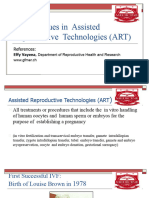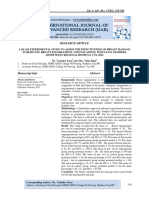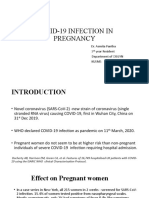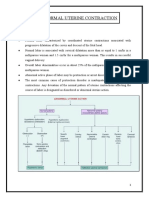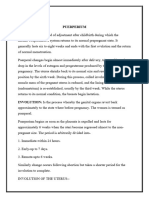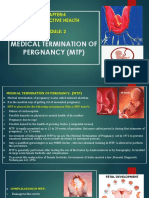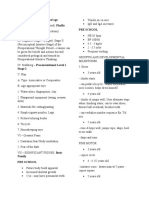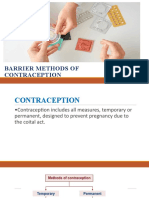0% found this document useful (0 votes)
140 views5 pagesContraception Methods: 1. Long-Acting Reversible Contraception
Long-acting reversible contraception methods like IUDs and contraceptive implants provide highly effective pregnancy prevention for years. Hormonal contraceptives such as oral pills and contraceptive patches use hormones to thicken cervical mucus or prevent ovulation on a monthly basis. Barrier methods block sperm from reaching an egg and include male and female condoms as well as diaphragms. Natural family planning relies on fertility awareness to avoid sex during fertile periods but has a 3% failure rate. Permanent sterilization procedures like vasectomies and tubal ligations provide lifelong contraception.
Uploaded by
Faith MarfilCopyright
© © All Rights Reserved
We take content rights seriously. If you suspect this is your content, claim it here.
Available Formats
Download as DOCX, PDF, TXT or read online on Scribd
0% found this document useful (0 votes)
140 views5 pagesContraception Methods: 1. Long-Acting Reversible Contraception
Long-acting reversible contraception methods like IUDs and contraceptive implants provide highly effective pregnancy prevention for years. Hormonal contraceptives such as oral pills and contraceptive patches use hormones to thicken cervical mucus or prevent ovulation on a monthly basis. Barrier methods block sperm from reaching an egg and include male and female condoms as well as diaphragms. Natural family planning relies on fertility awareness to avoid sex during fertile periods but has a 3% failure rate. Permanent sterilization procedures like vasectomies and tubal ligations provide lifelong contraception.
Uploaded by
Faith MarfilCopyright
© © All Rights Reserved
We take content rights seriously. If you suspect this is your content, claim it here.
Available Formats
Download as DOCX, PDF, TXT or read online on Scribd
/ 5






